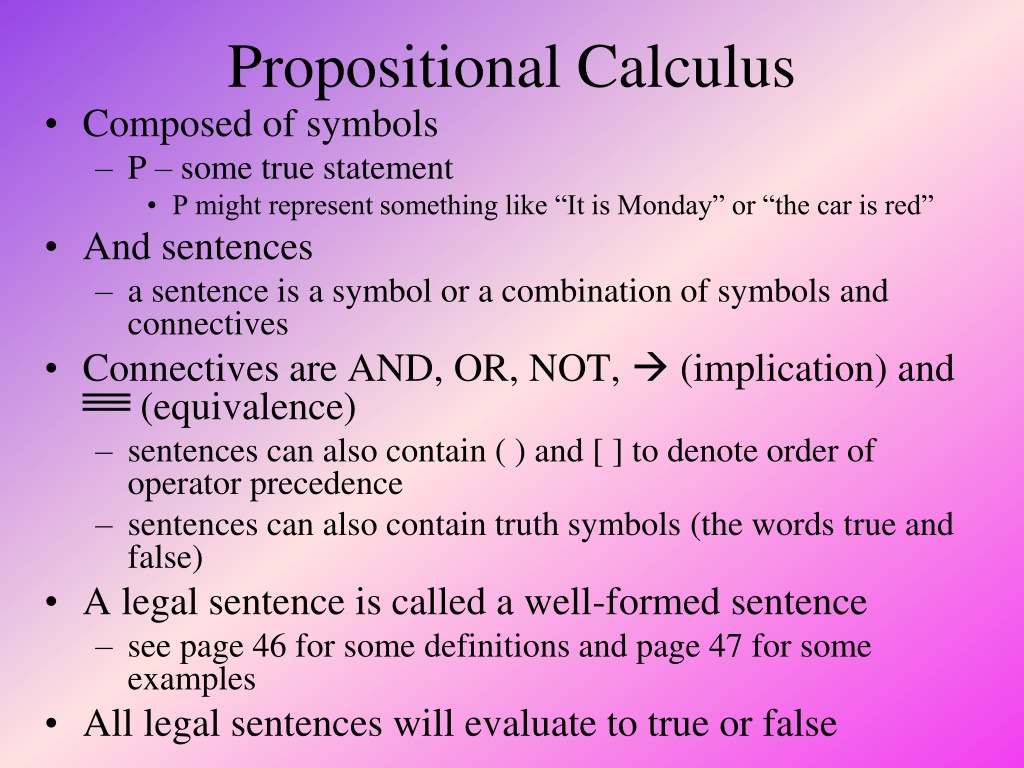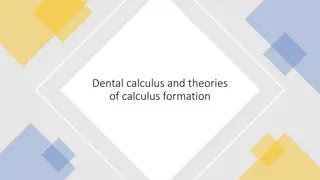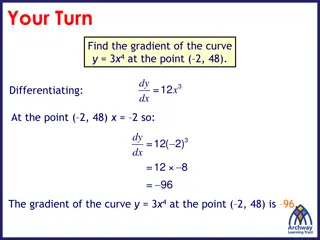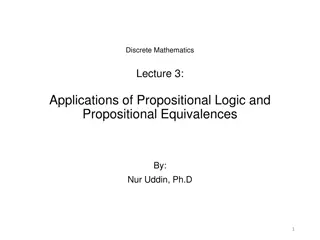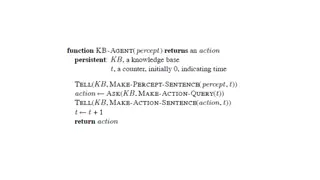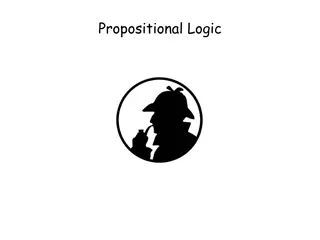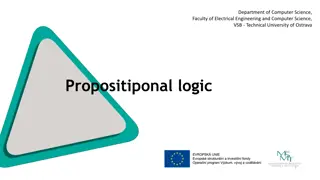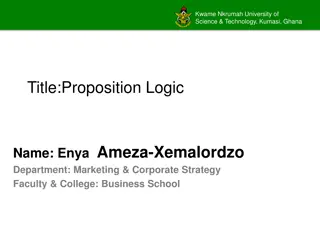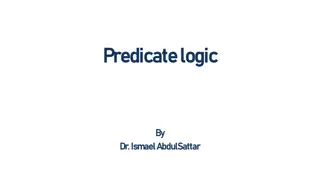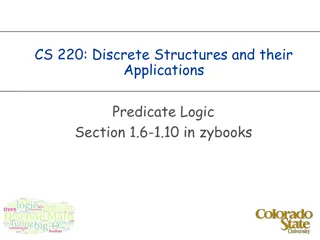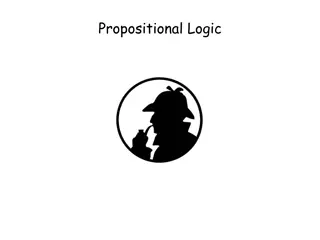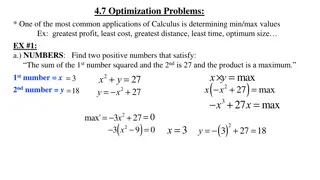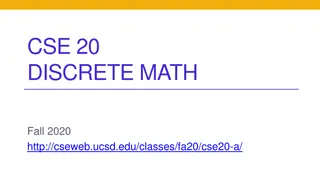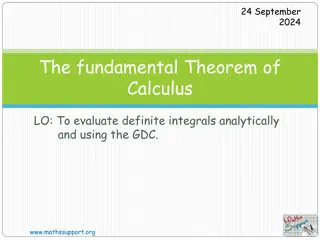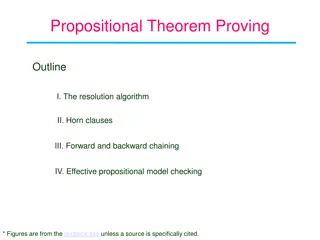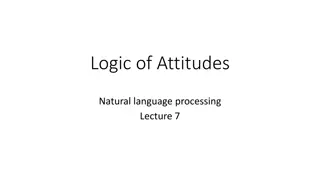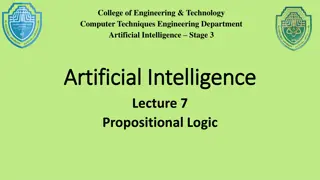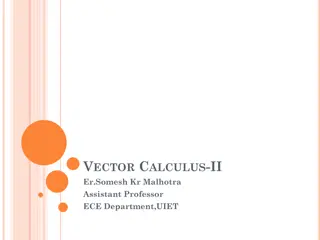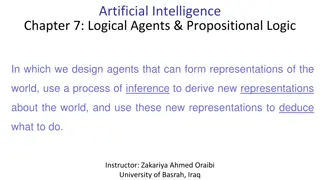Propositional Calculus
Propositional calculus involves symbols representing true statements like "It is Monday" or "the car is red." Learn about connectives, semantics, and data-driven reasoning within this logical system. Predicate calculus expands on propositions by incorporating relationships between entities through predicates. Dive deeper into first-order predicate calculus for AI applications.
Download Presentation

Please find below an Image/Link to download the presentation.
The content on the website is provided AS IS for your information and personal use only. It may not be sold, licensed, or shared on other websites without obtaining consent from the author.If you encounter any issues during the download, it is possible that the publisher has removed the file from their server.
You are allowed to download the files provided on this website for personal or commercial use, subject to the condition that they are used lawfully. All files are the property of their respective owners.
The content on the website is provided AS IS for your information and personal use only. It may not be sold, licensed, or shared on other websites without obtaining consent from the author.
E N D
Presentation Transcript
Propositional Calculus Composed of symbols P some true statement P might represent something like It is Monday or the car is red And sentences a sentence is a symbol or a combination of symbols and connectives Connectives are AND, OR, NOT, (implication) and (equivalence) sentences can also contain ( ) and [ ] to denote order of operator precedence sentences can also contain truth symbols (the words true and false) A legal sentence is called a well-formed sentence see page 46 for some definitions and page 47 for some examples All legal sentences will evaluate to true or false
Semantics of Propositional Calculus An interpretation of a propositional calculus sentence is the mapping of propositions to true or false values and the application of the operators AND, OR and NOT are as you would expect them to be from what you have studied in 260, 360, 362 for instance, assume P is true and Q and R are false the sentence P AND Q AND R is false, P OR Q AND R is true (AND has higher operator precedence than OR so Q AND R is false, P OR Q is true) the sentence (P OR Q) AND R is false A B is true if A and B are true, or if A is false and B is true, or if A is false and B is false, is false only if A is true and B is false A B is true if A and B have the same truth value we can use truth tables to derive the interpretation for a sentence
Example (from 3.3.1) Assume s & t are true, what else is true? by starting with items we know are true/false and deriving other items, we are performing data-driven reasoning The following implications can be applied s r (so r is true) t r (two ways to prove r is true) s u With s, t, r and u true, we can apply r p Therefore we know s, t, r, u, and p are true We have the following knowledge q p r p v q s r t r s u s t
Predicates Propositions are too limited to be useful in AI we cannot represent rules like if you are human, then you have intelligence or all men are mortal We turn to predicates to enhance our representation a predicate is a symbol that describes a relationship between entities predicates have arguments (entities) in a way, you can think of a predicate as a boolean function, you pass it parameters and it returns true or false arguments can be specific instances or variables human(frank_zappa) or human(X) We expand our calculus to predicate calculus more precisely known as first order predicate calculus Predicate calculus is like propositional calculus except that it includes predicates and quantifiers
Predicate Calculus Predicate calculus statements contain symbols (propositions, truth values) terms (predicates with specific values known as constant symbols and/or variables and/or functions) functions must be placed inside of terms, for example friends(Dave, father_of(Fred)) where father_of is a function that returns a constant symbol so that father_of(Fred) will return the person who is the father of Fred sentences contain symbols, terms, connectives (AND, OR, NOT, , ) and quantifiers functions by themselves are not legal sentences In general, propositions are capitalized, constant symbols are all lower case and variables start with a capital letter but are then lower cased we will often use single letters for variables, predicates are often verbs, nouns or adjectives while constants will be personal nouns
Quantifiers What does the statement tall(X) mean? Since X is a variable, should we interpret this as saying that anything is tall or that there are things that are tall? we enhance our predicates to include one of two quantifiers so that we can specify what a variable represents universal all things in the universe, written as existential there exists at least one item in the universe, written as Quantifiers are usually used inside of implications (rules) such as X Y : human(X) father(Y, X). for all X in the universe there exists a Y such that if X is human then Y is X s father every human has a father
Semantics of Predicate Calculus We again define an interpretation as the derivation of true and false values to sentences by applying the truth values of propositions and predicates if there are functions, then each function provides a mapping (that is, returns a value to be used within a predicate) apply the operators as you would in normal logic (AND, OR, NOT as per 260/360/362, implication is false only if the left hand side is true and the right hand side is false, equivalence is true if both sides have the same truth value)
Interpreting Predicate Calculus Notice that the semantics of predicate calculus are deriving the truth/falseness of statements But we also have to know how to understand the predicate calculus terms (and/or write them) Unfortunately, predicates and their arguments are merely symbols consider: friend(jim, bob), we would interpret this as Bob is a friend of Jim could it also mean Jim is a friend of Bob s? is the predicate symmetric? (consider father(jim, bob) instead) friend is merely a symbol so that this might mean something different like Jim has friended Bob on Facebook Jim considers himself to be a friend but Bob does not Jim and Bob both are friends of someone (not necessarily each other)
Blocks World Example We further define rules for clear, stack, pick_up, put_down and hand_empty For instance: for all X, if(ontable(X) OR on(X, Y) hand_empty That is, the hand is empty if every block is either on the table or on another block See the textbook for the clear and stack rules Our pick_up rule might be stated as if(hand_empty & clear(X) pick_up(X) Given the above knowledge, we could pick up either c or b
Reasoning with Predicate Calculus In general, there are two ways to reason given a predicate calculus representation Modus Ponens starting with known items that are true, use implication rules in a left-to-right manner to conclude new true terms match left hand sides with known items and conclude whats on the right hand side this left-to-right approach is known as form of forward chaining Modus Tollens starting with known items that are false, use implication rules in a right-to-left manner to conclude new false terms this is known as backward chaining
Unification Lets consider an example of Modus Ponens we know that all men are mortal and we know that Frank Zappa is a man X: man(X) mortal(X). man(frank_zappa). can we conclude mortal(frank_zappa)? Modus Ponens seems to apply but man(X) is not the same as man(frank_zappa) so we cannot apply Modus Ponens yet First, we must unify the variable X to a specific instance (symbol constant), frank_zappa Now, mortal(frank_zappa) follows and we can conclude this as being true unifications are often denoted formally with the notation {X/frank_zappa} and can be thought of as bindings, much like variables are bound to values at run-time
Other Techniques If we know X AND Y is true, we can conclude X is true, and we can conclude Y is true (or both) this is known as elimination If we know X is true, and we know Y is true, then we can conclude X AND Y is true this is known as introduction If we know X: p(X) is true, then we can replace X with any known symbol constant and the result is true this is known as universal instantiation we need this to perform unification If we have an existential quantifier, we can replace it with a function that will return an appropriate value this is known as Skolemization and requires a skolem function if we know X: father(X, bob) and we have a skolem function get_father(X) which returns an instance that fulfills the function, and we know father(jim, bob) then we can generate X using get_father(bob)
Predicate Calculus and Complexity Problem solving with predicate calculus is relatively simple codify what you know into predicates and implications use forward (or backward) chaining and unification to prove new things Unfortunately, this approach is computationally complex how do you select an implication to try? if you know hundreds of things, you might try them all one at a time to see where it leads how do you know what symbol constant to unify to a variable? Assume you know n things with m variables (m is probably < n) and there are k constants to unify You might find that you have as many as 2n*k different things to try when applying the previous techniques!
Example: Financial Advisor We use logic to advise a person on whether to invest in savings, stocks or a combination Based on the person s current savings and income level We evaluate savings and income as adequate or inadequate A rules is used to draw the conclusion of whether a person has adequate or inadequate income based on income, number of dependents you will see on the next slide how, when dealing with numbers, we need a function like greater(X, Y) which returns true if X > Y And a rule is used to determine whether to conclude that the person should invest in savings, stocks or a combination
Using a Data Driven Approach #1-8 are our rules #9-11 is the knowledge for a particular person to evaluate
Example Continued NOTE: the previous figure is lacking the functions minincome(X) = 15000 + (4000 * X) minsavings(X) = 5000 * X Now lets see what the Financial Advisor will conclude (recommend) we plug in X = 3 for minincome which gives us 27000 and minsavings which gives us 15000 rule 7 applies by unifying X to 25000 and Y to 27000 (we use rule 7 because ~greater(25000, minincome(3)) so we conclude income(inadequate) rule 4 applies by unifying X to 22000 and Y to 15000 so we conclude savings(adequate) rule 3 then applies so we conclude invest(combination) this person should invest in both Assume a person has 4 dependents, a steady income of $30,000 and $15,000 in savings, what should we conclude?
Solution We want to know location(fred, Y) As a goal-driven problem, we start with this and find a rule that can conclude location(X, Y), which is rule 7, 8 or 9 Rule 8 will fail because we cannot prove warm(Saturday) Rule 9 is applied since day(saturday) is true and ~warm(saturday) is true Rule 9 s conclusion is that sam is in the museum Rule 7 tells us that fred is with his master, sam, so fred is in the museum
